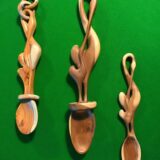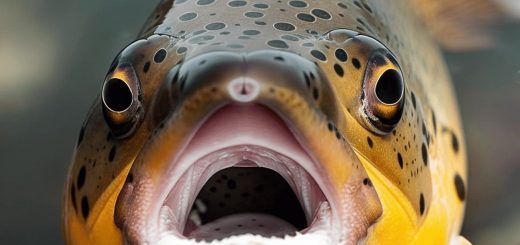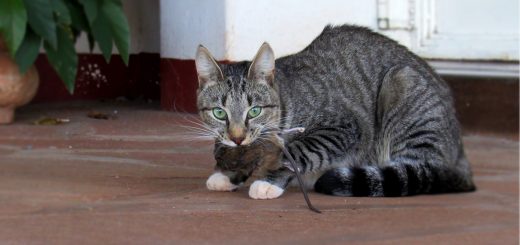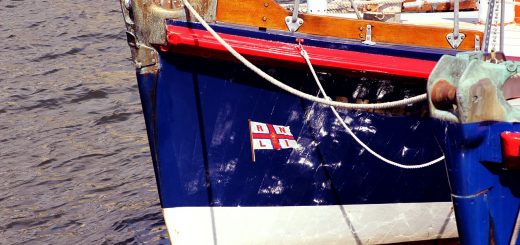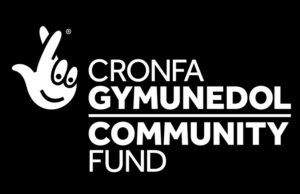Creating Great Characters – A Writer’s Trick
Writing tips from Pembrokeshire author Tim Wickenden
The most important ingredient in a good story is good characters. As a writer I spend a lot of time thinking about my characters and how to make them believable. I know when I have a good character as they begin to take on their own life. I think about them as I would a real person. I feel them speaking through me and find myself becoming emotionally caught up in their fictional lives. For my new book I needed to create a female character who comes back to haunt and disrupt Max Becker’s life. As a student of 19th- and 20th-century German history, I often find inspiration from real people, which helps to add substance to my characters.

Kathrin, the young girl in the photo is the inspiration for my character. Pretty, isn’t she? Looks like a regular seven-year-old. Born on 19 February 1937, her name was Holdine (pronouced Hol-Deen-a) Kathrin, although she was known to her family as Holde.
The story goes that when she was born, the doctor who delivered her said “Das ist eine Holde” (that’s a pretty one) and the name stuck.
On 1 May 1945, age just eight, she was murdered. Apparently she was a quiet girl who didn’t stand up well to her siblings, and to compensate she became something of a favourite to her father whom she was devoted to. Her short and tragic story moved and interested me and aided in the creation and fleshing out of the fictional ‘Holdine’. There is also another connection with a plot theme in my novel, but I can’t go into that as it would spoil the story. To find out more about that, you will have to read the author’s notes, where all will be revealed.
Holdine had six siblings: four sisters (two elder, Helga and Hildegard, and two younger, Hedwig and Heidrun), one elder brother (Helmut) and a much older half-brother, Harald Quandt. Her parents were Joseph and Magda Geobbels. It is a common myth that the children were given first names beginning with the letter ‘H’ in honour of Hitler, but there is no evidence to support this. Magda’s two boys from her first marriage also had first names beginning in an ‘H’ and this predates any relationship with Hitler. Also, Magda’s mother stated that the family had fun searching for new baby names beginning with ‘H’ for each successive child.
On 3 May 1945 Soviet troops entered Hitler’s bunker and found the children. They were dressed in their nightclothes, the girls with ribbons in their hair. Though it is not 100% certain, it is probable that they were killed by cyanide administered by their mother. The children were much liked by the adults living out those last desperate days in the bunker and, among others, Albert Speer had offered to take the children out of Berlin. Ultimately their parents decided it was best they die alongside themselves and their Führer. The children did not know what fate had been decided for them, in fact they had been lied to, being told that they were to leave the bunker. There is evidence that the eldest child, Helga, realised that they were being lied to and resisted when being given the cyanide.
The Soviets spirited the bodies away. Autopsies were performed, and over the next months their bodies were repeatedly buried and exhumed. In 1946 they were interred at the SMERSH facility in Magdeburg. In 1970 on the orders of Yuri Andropov, KGB officers exhumed the bodies, cremated them, and scattered their ashes over a tributary of the river Elbe.
In 2005 Rochus Misch, one of Hitler’s trusted bodyguards and radio telephonist at the bunker, suggested the placing of a memorial plaque to the six children, which was resisted for fear of offending the memory of the victims of the Holocaust. He stated that he deeply regretted not intervening on the children’s behalf and it was unfair that they should be treated as criminals.
I do not know what young Holdine was really like, or how she would have turned out had she been allowed to live. Ultimately she and her siblings were innocent victims of a deeply twisted, cruel and evil regime and no number of memorials ever makes that right. Anyway, memorials to those with direct links to leading Nazis, and Josef Goebbels was one of the top five, only serve as magnets to Neo-Nazis. Interestingly, Holdine’s father used the children for propaganda purposes with them appearing dozens of times in newsreels. I do not think he could help himself, he was so deeply enamoured with Hitler, the Nazi cause, and his love of propaganda at which he was a master: he never missed a trick.
Had she lived, Holdine would be 83 today, which makes me realise that although what happened in Europe between 1933 and 1945 feels like a long time back, it is still well within living memory, and though I write fiction, I want all my made-up characters to speak of their past. In my book Holdine is a complex person driven by personal tragedy, which ultimately makes her do bad things. We find out much more about Max and his past and how he and Holdine’s lives became unescapably linked setting them on a course that leads to a thrilling chase, death, kidnap and ultimately a climatic conclusion. As with all my writing, it is meticulously researched. I love chasing down the facts and can spend hours tracking small details that I am unlikely to ever write about, but that enable me to engender a realism to my characters.
I am not the first author to be interested in the Goebbels children and their tragic end. Several novels have been written through the eyes of one or more of the children. For me as an author, people like Holdine help to make her fictional double so much better and for that I thank her. Incidentally, both Magda and Josef Goebbels believed in reincarnation and that by killing their children they could come back free from the burden of their association with the crimes of their parents. Perhaps, in part, Holdine’s reincarnation lives, at least partly, in the fabric of my imagination.

Tim Wickenden was born in 1962 and has been a hobbyist writer since his teens, writing many short stories and a number of plays. He lives in the fabulous town of Fishguard and still works as a carpenter/furniture maker, writing in the afternoons, evenings and weekends. Tim always finds time to spend with his autistic 12-year-old son, playing games on the PS4, going swimming and walking. If you want to know more about his work, he can be found on Facebook, Twitter and Instagram, and his author website is www.timwickenden.com. Tim’s books can be found on Amazon.
Follow these links: http://mybook.to/angel_avenger http://mybook.to/girl_hunter










